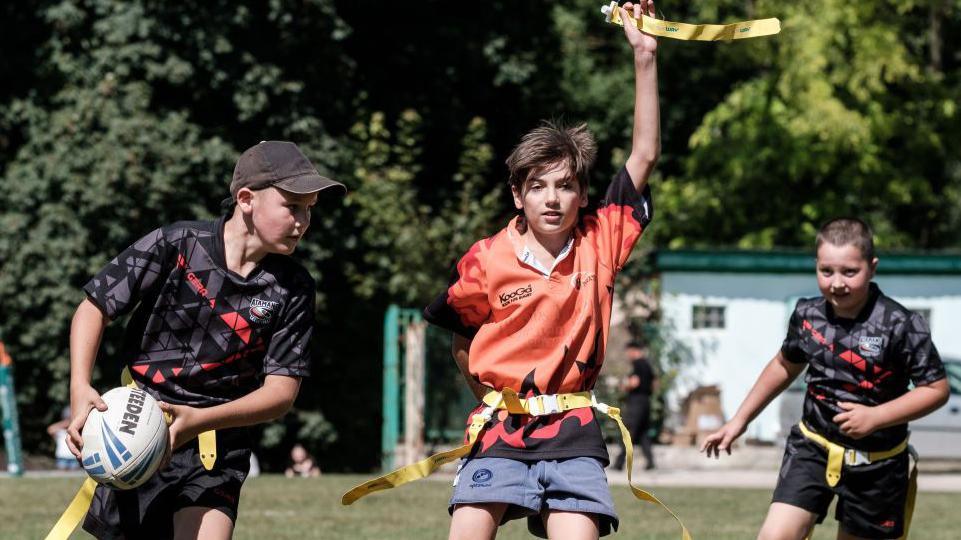Schools to offer non-contact rugby to ease 'injury fears'

Tag rugby is a form of non-contact rugby
- Published
A non-contact version of rugby union will be implemented in schools to help the Rugby Football Union manage a "decline in participation over injury fears".
A review conducted by the RFU found fewer people are playing the sport at youth level and traditional private rugby schools because of injury concerns, and the view that it is a difficult game to introduce.
Contact, reduced contact and non-contact formats will be supported in schools, enabling established schools to offer alternative forms of the game in their maintained 'compulsory rugby term'.
Sir Jon Coles, chief executive of national schools group United Learning - who led the review - says that from "under-15 upwards" there will be a framework for full-contact rugby to give schools a "clear way" to manage injury risk.
"The RFU must now take bold steps to make sure that schools with a strong rugby tradition want to play rugby and other schools want to join in," Coles said in a RFU statement.
"Our proposals for the RFU to codify nationally three formats with clear competitive structures, are designed to make sure that established schools feel able to keep rugby firmly on their timetable for all pupils."
Currently in England, children can start to be introduced to contact rugby from under-nines., external
The aim is to have 5,000 schools playing the non-contact (T1) form of the game in the next four years, with a large untapped market in schools that have no tradition of playing rugby found in the review.
'Flatpacks' will be provided by the RFU, containing all the equipment needed to play T1 rugby, which will also have a range of resources for staff to be able to teach the format - even if they have no experience.
The goal is the introduction of a national network of 100 school rugby managers by 2027, with 40 already in place working across clusters of local schools.
The RFU's new reduced tackle height for all levels below professional rugby will also be clearly communicated to schools, parents and young players.
From the start of this season, the legal tackle height in community rugby was lowered from below the shoulders to the "base of the sternum" to reduce head injuries.
In January the RFU announced the tackle height would be from the "waist" down, a decision which was met with uproar in the game - resulting in an adjustment before this season.
Last year more than 300 former football, rugby league and rugby union players in the United Kingdom took legal action over brain injuries they claim to have sustained during their playing careers.
What is T1 rugby?
Launched in October 2023 by World Rugby,, external the game was introduced in England this season to increase participation numbers.
It is the first non-contact format to reflect the unique characteristics of rugby, so includes scrums, line-outs, kicking and a breakdown.
Played on half-sized pitches and with seven-a-side teams, it contains many of the attacking and defending aspects of rugby.
Each half lasts 10 minutes and once touched the attacker must present the ball, with two attackers and three defenders required at the breakdown, while seven touches are allowed to score before a turnover is forced.
If an opponent rips the ball then they must pass or kick within three steps and are unable to score from the breakdown.
The game uses an uncontested drop-kick to start and restart the match, and uses rolling unlimited substitutes.